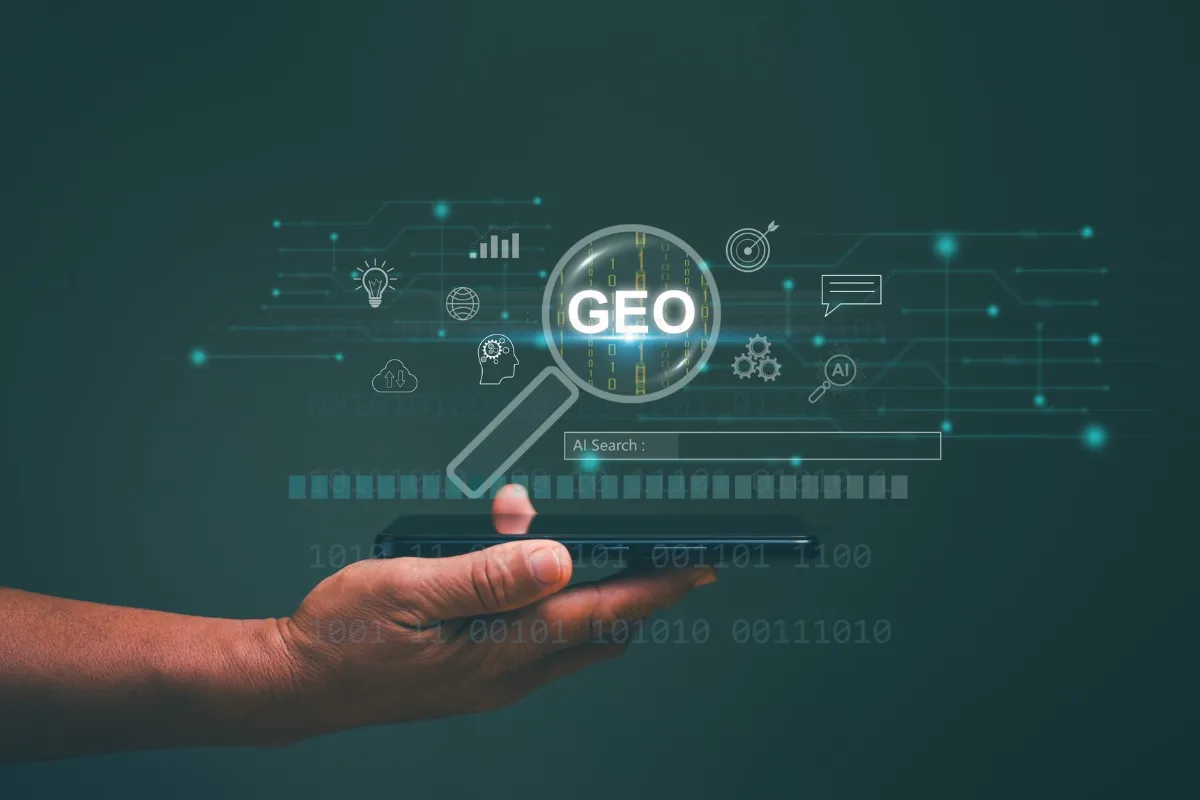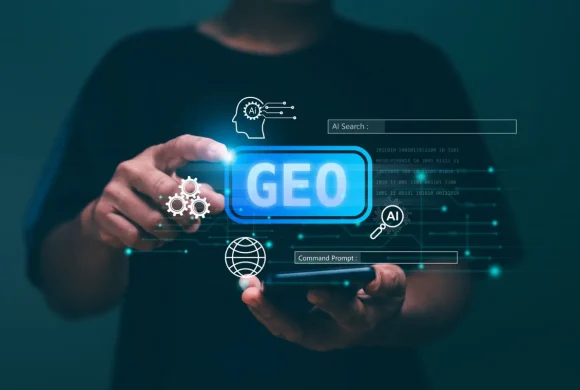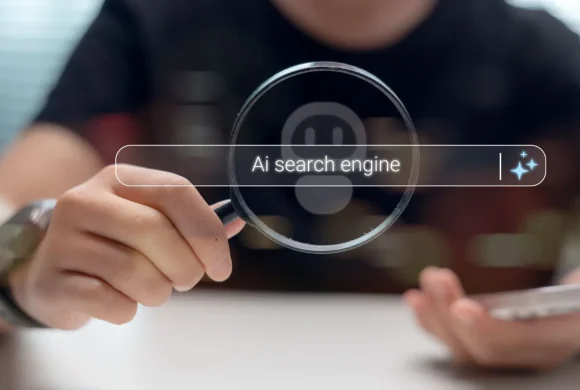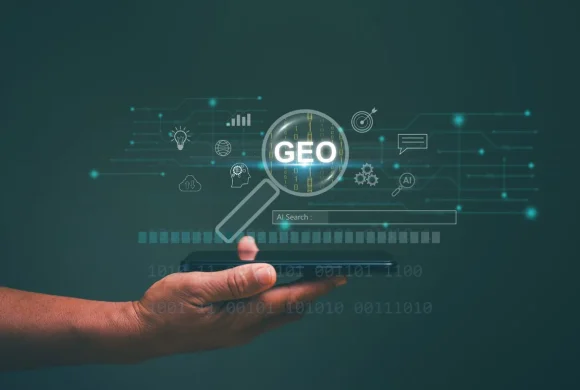SEO vs. GEO: What Australian SMEs need to know


For over 15 years, we’ve been working with clients across many disciplines to build their SEO value. Search Engine Optimisation, SEO, is the master key to digital marketing. Without it, even businesses with the most dynamic products and services miss out on the biggest tool to launch themselves to the masses. Google.
Now, we have a new and very exciting platform disrupting how people interact with the internet, especially how they search for products, services, recommendations, and even ideas. AI is staking its claim, fast and effectively.
For those still confused about SEO, it is the method of structuring websites and adding content to make them attractive to online search engines, namely Google. It is a skill with a great deal of strategy behind it. A well-designed and constructed SEO-optimised website ensures that people searching for a particular product, service, or experience related to your business are presented with your information and website.
Traditionally, a potential customer would type keywords into the internet browser. “Party balloons in Camberwell,” or “Engineering businesses that are experts with 3D printing.” Google would present a list of candidates in ranking order. Being on this first page was the golden opportunity, and Google was and still is exceptionally well designed to ensure visitors are presented with the best possible options.
Ensuring your business is one of those options, without spending a fortune on Google Advertising, depends on how well your SEO is structured, combined with a range of additional factors, including content quality and consistency, website user experience, and relevance. It is an ongoing and essential practice for any business with “Search” as part of its marketing mix. It never was or will be a set-and-forget process.
“SEO and GEO are an ongoing and essential practice for any business with “Search” as part of its marketing mix”
Explain GEO, please?
GEO is the acronym for Generative Engine Optimisation. With people increasingly turning to AI platforms such as ChatGPT, Perplexity, Gemini, and CoPilot as their source of truth, GEO is a strategy to optimise website content for AI-powered search tools and generative AI models.
This does not mean that traditional SEO practices are obsolete; however, it does mean that to stay competitive and maintain “search” momentum, businesses need to adopt a two-play strategy: SEO and GEO.
Differences and similarities
A significant difference is how people interact with online tools and how information is presented. For example, as mentioned above, people will type words into their search engine browser, Google. “Party balloons in Camberwell,” or “Engineering businesses that are experts with 3D printing,” and Google presents a list of candidates to the user.
AI works differently. The user will use voice-generated search. They speak into their device and ask Google, ChatGPT, or an alternative AI bot for help or information. These are not “keyword” searches; they are natural language queries.
While the game got bigger, the results have narrowed. AI users won’t receive pages of options but a summary of what looks and sounds the best and which source answers the question being asked.
“While the game got bigger, the results have narrowed.”
What does this mean for your digital marketing?
For businesses that have built a strong online presence through SEO, you may well be a “source of truth” in AI, but don’t get complacent. For businesses who opted for basic templated websites, spammy content schedules, or content for content’s sake, you are slowly but inevitably becoming invisible.
It is time to shift to thinking of your digital marketing as a two-player game. Structuring a website and content for SEO and GEO is not an option; it is an essential strategy decision. High quality content, human written, answering questions in a conversational tone, posted consistently and regularly with the correct schema model, is the new set of keys to ensuring your business continues to thrive in a changing digital environment.
“SEO and GEO is not an option; it is an essential strategy decision.”
Brilliant Digital is well positioned to help you
The team at Brilliant Digital has been successfully implementing content strategies over the past 12 months to ensure our clients’ digital presence is not compromised in the AI space. Viewing our current and new clients through the lens of SEO and GEO is why we are a leading growth engine, helping B2B businesses maximise their online marketing efforts.
Contact us today for an insightful discussion with our lead strategist, Deb Croucher. We know SEO and GEO.

About Deb
Meet the author
Deb Croucher is the founder of Brilliant Digital. She works directly with SME owners to create strategy-led, full-service marketing that delivers, not just in Google, but in the new world of AI-powered discovery.

Let’s Grow Your Business Together
Key Takeaways
SEO vs GEO What Australian SMEs Need to Know
What is GEO, and how is it different from SEO?
GEO stands for Generative Engine Optimisation. It’s about making your website content attractive to AI-powered search tools like ChatGPT, Perplexity, Gemini, and others. Unlike SEO, which is about getting listed on Google’s traditional search results, GEO is about becoming a “source of truth” for AI platforms so your business is included in their generated answers.
Is SEO still relevant, or is GEO replacing it?
SEO is absolutely still relevant; it’s not going away. What’s changing is that AI is now also influencing how people search for information, and that’s where GEO comes in. Your digital marketing strategy now needs to include both SEO and GEO to stay visible in all kinds of search.
Why is GEO important for my business now?
Because customers are starting to use AI platforms, like ChatGPT or Gemini, to ask questions instead of traditional searching, these platforms don’t show a long search results list; they summarise a handful or fewer of the best answers. If your content isn’t optimised for GEO, your business could be left out of those summaries entirely.
How do people search differently using AI?
AI searches are conversational and natural. Instead of typing keywords like “party balloons Camberwell”, a user might say: “Where can I get party balloons near me?” AI responds with a summarised answer, not a list of options, based on which sources it sees as most credible and helpful.
Will I still show up if I only focus on SEO?
If your SEO is well-structured and your content is valuable, you may appear in AI results. But it’s not guaranteed. Updating your website for GEO is essential. Many businesses using templated websites or thin, spammy content are becoming invisible in AI-generated answers. GEO helps ensure your business doesn’t fall through the cracks.
What kind of content works best for GEO?
GEO rewards high-quality, human-written content that answers real customer questions in a natural, conversational tone. Consider the kinds of things your customers ask you, and answer those questions clearly and helpfully on your website, especially in FAQ sections and blog posts.
Do I need to change my website for GEO?
Possibly. Your site should be well-structured, with clear content, fast load times, and regularly updated content. You may also need to implement the correct schema model, which helps SEO and GEO tools understand your site more effectively.
Is GEO just for big tech companies, or can small businesses benefit too?
GEO is critical for all businesses, especially SMEs that rely on online visibility. If you’re not optimised for AI search, you risk losing visibility to competitors who are. GEO isn’t about being everywhere, it’s about being the most helpful answer when AI is looking for one.
What does GEO mean for my content strategy?
It means your content needs to be:
- Relevant to your audience’s real questions
- Written in a natural tone, not keyword-stuffed
- Updated regularly, not set-and-forget
- Structured for clarity, using headings and FAQs
Think of it as creating helpful conversations on your site; that’s what AI is looking for.
Can I do GEO independently, or do I need professional help?
GEO requires a good understanding of how AI tools gather and present information, combined with a strong content strategy and technical website knowledge. Most SMEs benefit from working with a digital marketing team, like Brilliant Digital, that understands SEO and GEO and can build a strategy that does both well.
How often should I be updating my content?
GEO and SEO favour consistent and fresh content. That means regular blog posts, updates to key service pages, and keeping FAQs current. When choosing which websites to reference, AI platforms look for trustworthy, up-to-date information.
How can I tell if GEO is working for my business?
Because GEO works behind the scenes of AI tools, it’s not always obvious when you’re being referenced. However, if your website is seeing continued or growing traffic from non-paid sources, and you’re getting leads without running ads, that’s a sign your content is being found through SEO and GEO.
What’s the risk of doing nothing?
If your competitors adopt GEO while you don’t, you risk becoming invisible in AI-generated and traditional searches. The businesses that survive and grow online will be the ones who understand that SEO and GEO are not optional anymore; they’re essential.









